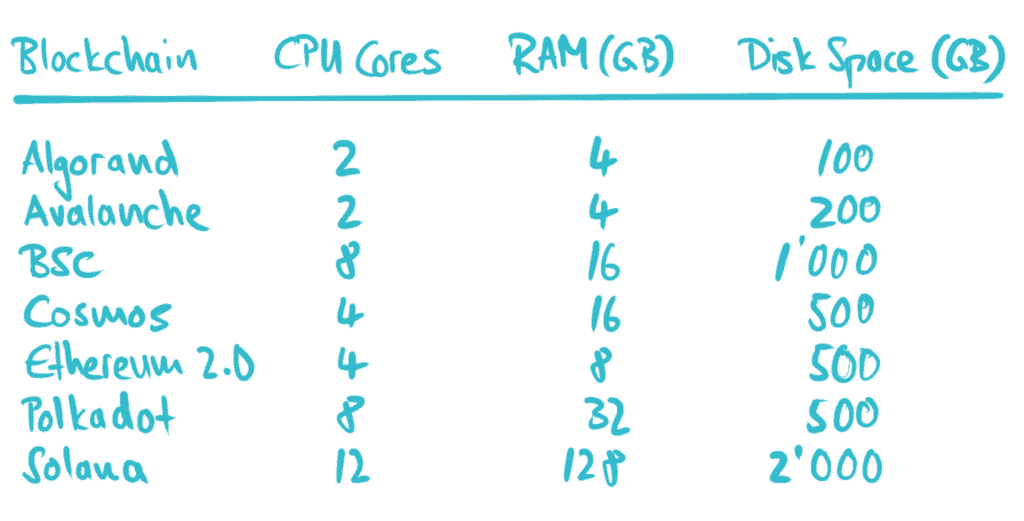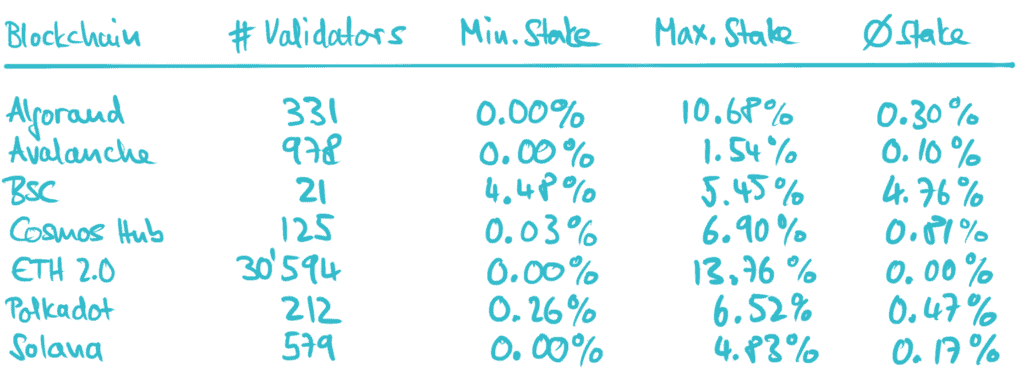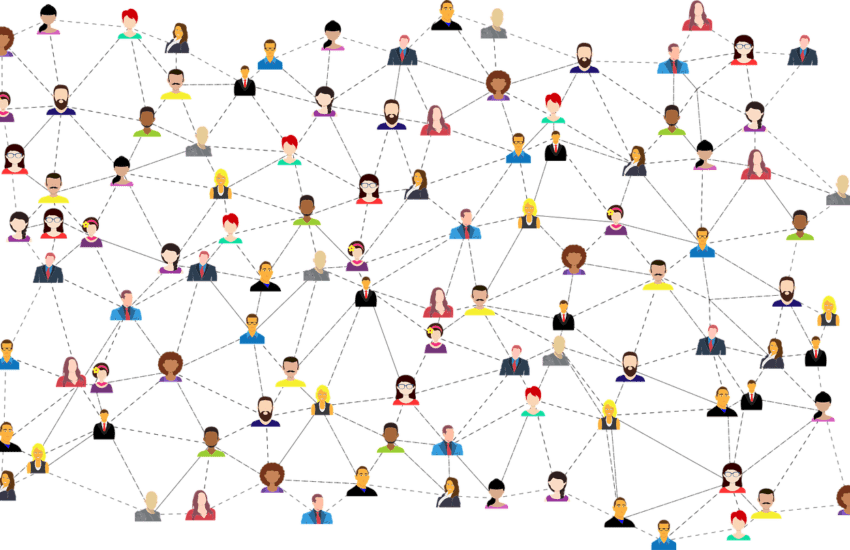The core idea behind Web 3, DeFi, blockchain, DAO, democratization of the web, etc. is decentralization. It is the be-all and end-all of this entire topic. What good is the most innovative protocol on a blockchain if the chain itself or the organization behind the protocol is centralized? Without MASSIVE decentralization, one can boast of using the latest blockchain technologies, but in fact we remain with the same centralized financial system that we have had in the past. Hence the legitimate question: How decentralized are the blockchains on which we have our coins? And anyway: What actually makes a blockchain decentralized? How can decentralization be measured? We want to answer these questions in this post.
Definition of decentralization
Sorry, unfortunately there is no standardized blockchain decentralization label that divides each blockchain into an official decentralization class according to clearly defined and generally accepted criteria. As always, when a scale isn’t well defined, for common understanding it makes sense to take the two extremes at the end of the spectrum. This is what we want to do here to get a feel for what decentralization means for blockchains.
- Definition “Fully decentralized blockchain”: In a fully decentralized blockchain there are millions or trillions of blockchain nodes (i.e., computers in the blockchain network) spread across the globe. The hardware requirements to run a blockchain node are minimal. Anyone can run a node on their smartphone. In a proof-of-stake blockchain, the native tokens required to participate in the blockchain’s consensus mechanism (i.e., staking) are evenly distributed across all nodes.
- Definition “Fully centralized blockchain”: There is only one or very few blockchain nodes, all geographically located in one place. The hardware requirements for the operators of a node are very high and expensive. The majority of the native tokens of the blockchain are concentrated with one or a few players.
In the following we want to take a closer look at some of these aspects.
Hardware requirements of different blockchains
The most important prerequisite for a decentralized blockchain is, of course, that the hardware requirements for the node operators are low. You will never get proper decentralization with your blockchain if the node operators have to buy an unaffordable supercomputer for it. Therefore: The lower the hardware requirements, the higher the potential for decentralization.
THE BLOCK Research has taken the effort to compile hardware requirements for PoS validator nodes for seven leading smart contract platforms. In the following overview you can see that the individual blockchains place very different requirements on the node operators; e.g. Algorand with very low requirements and Solana with very high requirements.

Stake requirements of different blockchains
In addition to hardware requirements, the minimum staking requirements are of course crucial for PoS blockchains. By minimum staking requirements, I mean the minimum number of native coins I need to be eligible as a validator on the chain’s PoS consensus protocol to help secure the blockchain and receive staking rewards. There are completely different approaches between the individual blockchains: Some chains limit the number of permitted validators “by design” to an often very low maximum value. Those willing to stake the highest amount of native tokens will get the limited validator slots. This means that supply and demand of the market play with the result that often horrendous minimum stakes are necessary and consequently the decentralization of the chain remains very limited. Polkadot, for example, belongs to this group. Other blockchains such as Algorand allow anyone to participate in securing the blockchain (and receive staking rewards) with even the smallest staking. Again, I refer to figures compiled by THE BLOCK Research:

Actual degree of decentralization of different blockchains
We have now seen that Algorand, for example, has very low requirements for minimal hardware and minimal staking. On the other side of the spectrum we find, for example, Binance Smart Chain with relatively high hardware requirements and extremely high minimum staking requirements. These approaches make Algorand very open and BSC very restrictive when it comes to participating in their consensus mechanism. Accordingly, we might expect Algorand to be a very decentralized chain and BSC to be a very centralized chain. However, this direct conclusion would not be enough, because in addition to these basic blockchain design principles, the distribution of the native tokens also plays a crucial role. What good is it if a chain by design allows for an unlimited number of validators, the hardware requirements are minimal and the minimum staking amount is under a dollar, when in reality all native tokens are held by a few players? So let’s take a look at the specific figures that THE BLOCK Research has compiled on the decentralization of blockchains:

The table above is of course also not the ultimate wisdom when assessing the decentralization of a chain, because we don’t know whether two different validators are actually independent in reality. According to the numbers listed above, however, it seems that Avalanche is the most decentralized with 978 validators, who have an average stake share of only 0.10%, with the largest staker only staking 1.54%. This contrasts with BSC, which only allows 21 stakers, with each staker staking an average of 4,76%. By the way, the smallest staker at BSC stakes a whopping 4,48%. This makes it clear that at BSC, about seven stakers are enough to paralyze the entire blockchain. A PoS blockchain requires 33% total staking power.
So, that’s it for our discourse on decentralization. The post is of course anything but conclusive and complete. However, I hope that with this summary I have given you an insight and a feeling for the decentralization of blockchains.
Source:
–Layer-1 Platforms: A Framework for Comparison, THE BLOCK Research (2021)
